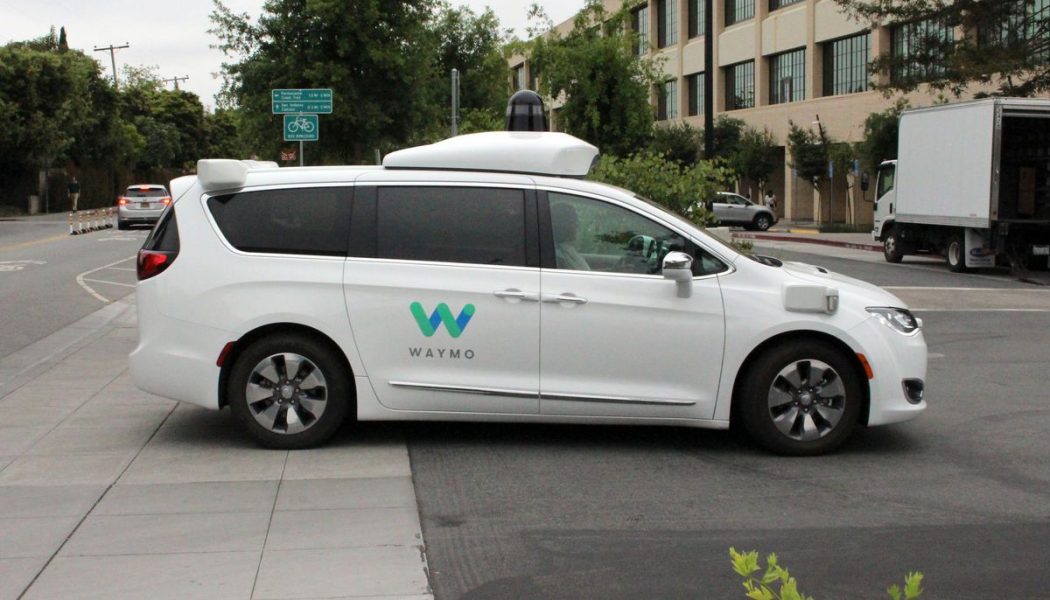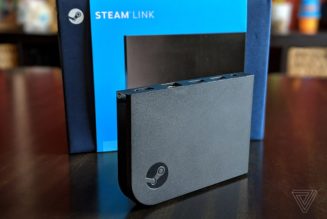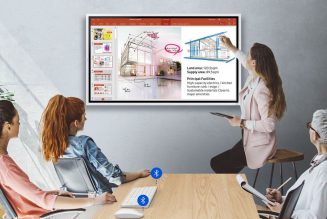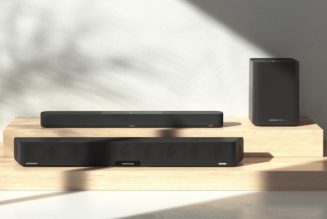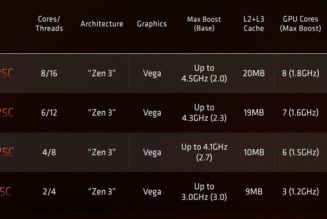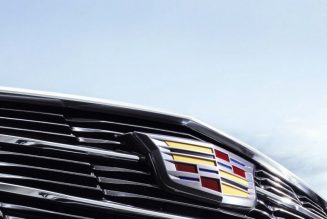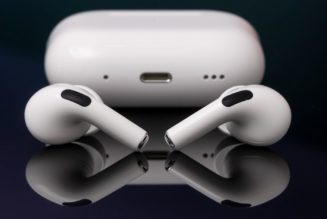Leo* stepped out of his house in Oakland recently to start his day as a backup driver for Waymo, the self-driving car company owned by Alphabet, and couldn’t believe what he saw.
Wildfires raging along the length of the West Coast had turned the sky an unsettling and unnatural shade of orange. Later in the day, the air would be acrid and thick with particulate matter. But for now, it was like stepping onto the surface of another planet. He couldn’t understand why Waymo was still operating its fleet of autonomous vehicles in such dangerous conditions.
“The sky looked like Tang,” Leo recalled, “yet they still got us setting up cars that are covered in ash.”
Across town, John* was having an eerily similar experience. A backup driver for Cruise, the self-driving car company affiliated with General Motors, John had been raising the alarm about air quality to his superiors at Aerotek, the contracting firm that supplies backup drivers and other workers to Cruise. But it didn’t seem like anyone was listening.
“Although our throats are itchy, we [were] all still going strong with no pause,” John said. On September 10th, with AirNow.gov registering the air quality in the Bay Area as “very unhealthy,” one of John’s co-workers started vomiting.
Waymo and Cruise, two of the leading AV companies in the world, employ thousands of operational staff in the Bay Area, including backup drivers, mechanics, cleaners, and fleet managers. Backup drivers, in particular, play a crucial role: they monitor the driving operations of the self-driving car, and occasionally take control when something goes wrong. Their jobs are important — but can also be boring and exhausting. Most of these workers are employed by third-party contractors and are already dealing with the stress and anxiety of coming back to work in the midst of a global pandemic. And now, in California’s fire season, these drivers are growing increasingly uneasy with what they perceive to be a lack of proper health and safety precautions taken by their employers.
Being inside a vehicle, with the windows rolled up and the air recirculating, has been shown to be safer than being outside during periods of increased air pollution, said Ed Avol, professor of clinical preventive medicine at the University of Southern California’s Keck School of Medicine. The problem, though, is being in an enclosed space with another person can increase the risk of exposure to the coronavirus. Waymo and Cruise require some of their drivers to work in pairs while testing their self-driving cars. “You would both be exhaling into and breathing from the same airspace,” Avol said. “That would be a concern.”
:no_upscale()/cdn.vox-cdn.com/uploads/chorus_asset/file/21919366/1142591427.jpg.jpg)
Facing the twin public health crises of a global pandemic and devastating wildfires, autonomous vehicle safety drivers face a stark choice: risk contracting the coronavirus by keeping their windows up, or risk the polluted air by rolling them down.
The Verge spoke with seven backup drivers for Waymo and Cruise (six current, one former), who raised concerns about being stuck in a vehicle for hours a day with another person without the ability to socially distance. They chafe at being asked to come back to work while the salaried employees in the engineering and software divisions of these companies get to continue to work from home. And they question why the companies feel the need to continue deploying fleets of vehicles on public roads when testing AVs hardly seems to meet the requirements of “essential business” under the state’s shelter-in-place rules.
These are not uniform opinions. Two drivers who spoke to The Verge said they are glad to be back at work after months of lockdown, despite the health risks. They acknowledge that they are crucial to the operation, since neither Waymo nor Cruise has progressed to the point of being able to test fully driverless vehicles on public roads in California. (Waymo has a permit to allow it to test full driverless vehicles in the state, but it has yet to do so. The company is testing a limited number of driverless cars in an area outside Phoenix, Ariz.)
In separate statements, Waymo and Cruise both said safety for their operational staff was a top priority. They outlined numerous steps they take to protect workers from viral transmission and air pollution. Waymo also provided contact information for two of its drivers who praised the company for its response to the pandemic. And while some self-driving car operators have laid operational staff off, including Cruise, Waymo touts the fact that it continues to pay its contract workers to stay at home.
But while backup drivers are important to the overall operation, they say they feel expendable by the third-party staffing companies that employ them. “It says data is more important than humans,” John said. “Especially a company valued at $17 billion isn’t willing to pause operations when necessary. It’s eye-opening that we are expendable and vulnerable, because finding another job in a pandemic is tough.”
:no_upscale()/cdn.vox-cdn.com/uploads/chorus_asset/file/21904697/1271647516.jpg.jpg)
Waymo and Cruise allow their staffing contractors, Transdev North America and Aerotek, respectively, to make decisions regarding when it is safe to test and how to respond to driver concerns. But drivers say those companies can be slow to act, communications are often contradictory, and they feel pressured to keep working despite unsafe conditions.
The frustration wasn’t exclusive to the backup drivers: operations supervisors for Transdev, who oversee the backup drivers, were being urged by higher-ups at Waymo to improve efficiency. In response, the supervisors requested that they come down to the garage and view the conditions themselves, two drivers said. Waymo management apparently declined the invitation, citing health concerns related to the pandemic. (A Waymo spokesperson said company executives regularly visits operations facilities once a week.)
“It says they really don’t care about us and they know we’re expendable,” a Waymo backup driver said, when asked how he felt about Waymo’s declination.
On September 10th, wildfires raged up and down the California coast and the air was thick with smoke and ash. Leo recalled barely being able to see San Francisco’s skyline from the Bay Bridge. But an email went out that morning from Transdev letting him know that he and dozens more would be expected to come into work.
Transdev said in the email its “policy around safety always involves employees making safe decisions and making the safest personal decisions.” The company instructed Waymo operations staff to reach out to their supervisor if they felt “unable to safely perform” their jobs due to air quality and needed to take a day off. Transdev employees have around six paid days-off a year they can use.
“Your absence for this purpose will be counted as an excused absence for the day,” Transdev said in the email. “You may choose to use any paid or unpaid time in your bank, including sick, vacation, or RTO.”
The email was sent by Transdev on a day when AirNow registered the air quality in the Bay Area in the “unhealthy” range. Vehicle operators that were assigned to drive in Twin Peaks, a neighborhood in central San Francisco, were instead being redirected to the Richmond district in the northwestern tip of the peninsula, where air quality was thought to be better. But that turned out to be short-lived: at 6:30PM, after a full day of driving, drivers were informed by their supervisors to cut their shifts short and come back to the vehicle depot.
Drivers said they felt pressured to keep working out of concern that taking too much time off will endanger their jobs, especially after spending several months “working from home” due to COVID-19. Unlike the software engineers and other salaried employees at Waymo and Cruise, operations staff at Transdev and Aerotek found themselves saddled with a lot of busy work, like online training sessions and other virtual “classes,” during the spring and summer lockdown. They heard about layoffs at other AV companies, and knew they could be next.
Despite Waymo’s insistence that it deserves credit for continuing to pay its backup drivers while its fleet was grounded, there have been some layoffs. Over the summer, Waymo announced that it would be shifting most of its Mountain View-based operations staff to San Francisco, in anticipation of eventually launching a robot-taxi service in the city. Those that couldn’t make the move were laid off, two Transdev workers said. That left many feeling expendable, fearful that they would lose their jobs if they voiced their concerns about safety. (A spokesperson for Waymo acknowledged that two vehicle operators were let go, which was a decision made by Transdev.)
“The drivers feel like their health is not important to Waymo or Transdev,” a former Waymo safety driver said on September 10th.
In a statement, Waymo said its vehicles are considered safe for operation through wildfire smoke under California’s Occupational Safety and Health Administration regulations. The company says it works with Transdev to test and evaluate different methods for monitoring in-cabin air quality. During the wildfires, drivers were advised to wear N95 or KN95 masks and keep a window cracked and air vents closed, and masks were offered to drivers who request them. And Waymo insisted that its Transdev workers can request time off without “fear of reprisal.”
“We continue to closely monitor the air quality situation in the Bay Area and have robust policies to ensure the health and safety of our team,” a spokesperson said in a statement.
After the smoke from the wildfires dissipated, Waymo began ramping up plans to resume testing with its full fleet, drivers said. On September 23rd, Transdev sent an email informing drivers that some of them would be called upon to pair up with another coworker for “dual driving.” Waymo often requires two employees ride in a vehicle — one to monitor the driving, the other to keep an eye on the various data streams — until the company becomes confident enough in the software for just one person per ride.
“Dual driving is a core part of our operations and supports our ability to fulfill the mission of our client,” Justin Windus, general manager of Transdev North America, wrote in the email. “If your position requires that you perform a dual driving function, you will be scheduled to those duties based on business need. In the event you refuse to perform any of your job functions, you should contact human resources to request a leave of absence. Please note, your refusal to perform your required job functions will make you ineligible for work from home pay.”
Withholding pay from workers who feel uncomfortable riding in a vehicle in close proximity to a coworker felt “retaliatory,” said one driver.
“Two people in a car with the air conditioner running is a recipe for disaster,” the driver said. ”The cabin is too small to circulate the air and the air filters in these cars are not regularly changed.” And for workers at Waymo’s Castle testing site in Central California, where temperatures often exceed 100 degrees, driving with the windows down “isn’t the most comfortable experience,” the driver added.
They are right to be nervous, experts say. “When people are in close proximity in a confined space, such as two people inside a vehicle, it does increase the risk of COVID,” said Yifang Zhu, professor in the Department of Environmental Health Sciences at UCLA.
Waymo insists that very few of its vehicles actually require dual driving and provided quotes from one dual-driving team who extolled its safety. In an email from a worker provided by Waymo, dual driving team Juneil Gonzales and Sebastian Dizon said that the job has been “great,” and that cleaning and disinfecting products are available. “Dual-driving precautions taken such as the barrier installation feels effective, & accessible break locations allows drivers to relax,” according to the drivers. “The open communication between the driving team, Waymo, and Transdev regarding the processes in response to Covid have been very helpful navigating through these times.”
Another driver, who’s contact information was provided by Waymo, agreed. “I can understand the frustration of others about being called back to work while salaried employees get to stay safe at home,” said Bertrand Baylosis, a Waymo driver, in an email, “however, the nature of our responsibilities doesn’t afford us the same luxury, but the fact that our safety always comes first to the company helps make me feel valued and made it easier to return to work.”
Some Transdev workers for Waymo have been selected to submit to twice-weekly COVID testing. In his email, Windus also urged those employees who had been chosen to “stay on schedule for your twice per week testing.” But employees are being asked to self-administer the tests using nasal swabs provided by a nurse, which feels “extremely questionable” in terms of accuracy, one driver said. (Researchers have said self-swab tests can be safe and accurate as long as detailed instructions are provided.) Also, the tests were being processed by Verily, a life science subsidiary of Google, leaving some drivers concerned about reliability and transparency when one company controls everything.
:no_upscale()/cdn.vox-cdn.com/uploads/chorus_asset/file/21929703/1150127517.jpg.jpg)
Most of California’s autonomous vehicle operators, including Waymo and Cruise, paused on-road testing in mid-March after San Francisco issued a “shelter-in-place” order banning all nonessential travel. Cruise resumed limited testing a month later, in April, using deliveries to local food banks as a pretext. Waymo followed suit, resuming limited operations in June delivering packages for two Bay Area nonprofits.
Drivers accused both companies of exploiting a loophole to get cars back on the road in defiance of local public health orders. Cruise, in particular, was criticized for deploying non-delivery vehicles despite public health orders banning regular autonomous vehicle testing. Cruise said the extra vehicles were needed for R&D support for the delivery operation.
Deliveries continued throughout the summer, as California saw its COVID caseload steadily grow. Cruise alone said it completed 100,000 deliveries for local food banks, SF Marin Food Bank and SF New Deal. The state recorded some of its highest daily case numbers for COVID-19 in July and August — but neither Waymo nor Cruise paused operations, continuing to operate its test fleet of vehicles. Drivers sit side by side in the vehicle’s front seats, one behind the wheel ready to take control if the car has an issue, and the other in the navigator’s seat taking notes. Waymo has added plastic partitions between the seats, and Cruise recommends one autonomous vehicle test operator (AVTOs) sit in the backseat to allow for more social distancing.
Cruise drivers, who are employed by Aerotek, began complaining in Slack about resuming a normal testing schedule while COVID numbers were spiking. Cruise then revoked Slack access to anyone who wasn’t currently on the clock. Employees were also prohibited from accessing Slack on their phones. Drivers said they thought the company was afraid of leaks. But without access to Slack during off-hours, employees couldn’t contact their supervisors if, for example, they started feeling symptoms related to COVID-19.
“Everyone is upset but can’t quit in a pandemic. Everyone was given the option to quit or work,” one Cruise AVTO (autonomous vehicle test operator) told The Verge. “I have no idea the safety precautions my partner takes and I have to sit in an enclosed car with them all day.”
Cruise said restricting Slack access was part of a company-wide mobile device management policy, but after hearing negative feedback from AVTOs, the company decided to exempt them from the decision.
Still, Cruise drivers felt nervous by the return to full operation amid a global pandemic. “They announced they were bringing everyone back to work literally right after SF and CA had two of their worst COVID infection days yet,” a Cruise driver said in early July. Cruise operations staff were told to fill out a survey about availability. “The survey seems to imply that those people who didn’t ‘volunteer’ earlier [for food deliveries] may have their schedules and days off changed (essentially punishing those of us who were trying to stay safe),” the driver said.
As the wildfires intensified, Cruise told drivers to swap out cloth masks for N95 or KN95 masks, which were offered, but not specifically required to be worn. But as August progressed, the wildfires got worse, and COVID showed no signs of slowing down. In late August, two drivers were sent home after reporting COVID symptoms. In September, the fires continued to spread. And finally on September 10th, Cruise finally decided to ground its fleet for five days.
“We recognize that everyone has a different sensitivity to smoke and dust,” Cruise said in an email to operations staff. “If you are experiencing discomfort, take steps to protect yourself and call out if needed. This is especially important if you are at higher risk because of any pre-existing health concerns. If you need any additional assistance or have any special circumstances, please reach out to your on-premise manager.”
“Our test drivers are heroes in this crisis,” Todd Brugger, general manager of Cruise’s operations in San Francisco, said in a statement to The Verge, “delivering over 100K meals to San Francisco residents in need.”
Many workers have been called heroes during the pandemic, but some of these people reject the description, arguing it’s used so often it can ring insincere. Some of Cruise’s vehicle operators say they feel this way, especially when they are being asked to work in conditions their counterparts in the software divisions of these multi-billion dollar companies would never be expected to encounter.
“The cars are covered with ashes,” John, the Cruise driver, said. “Meanwhile full-timers are off until January.”
* Names have been changed to protect the identities of those involved
